The Ultimate Guide to Building Ecommerce Landing Pages That Actually Convert
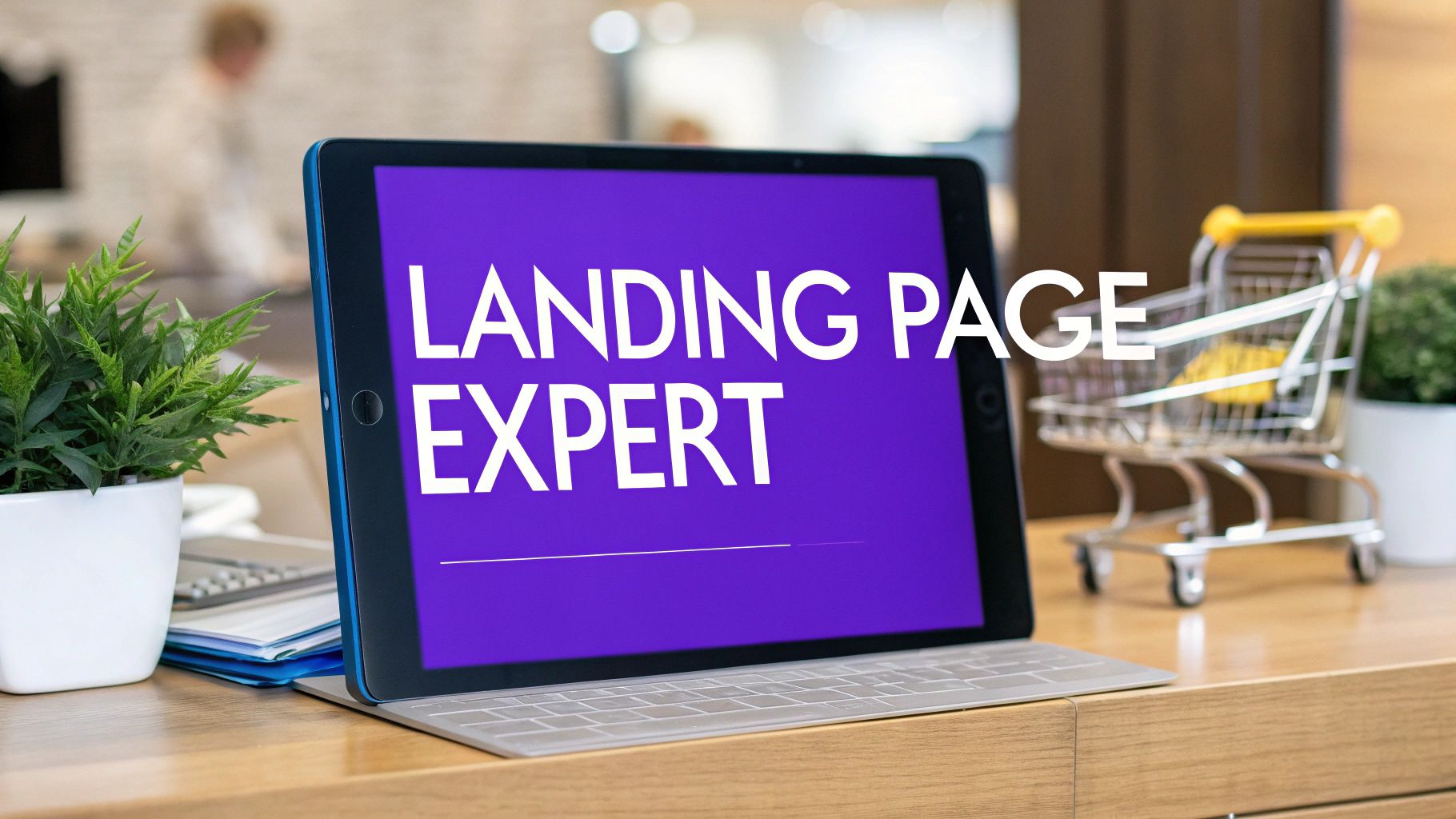
Understanding What Makes Shoppers Click 'Buy Now'
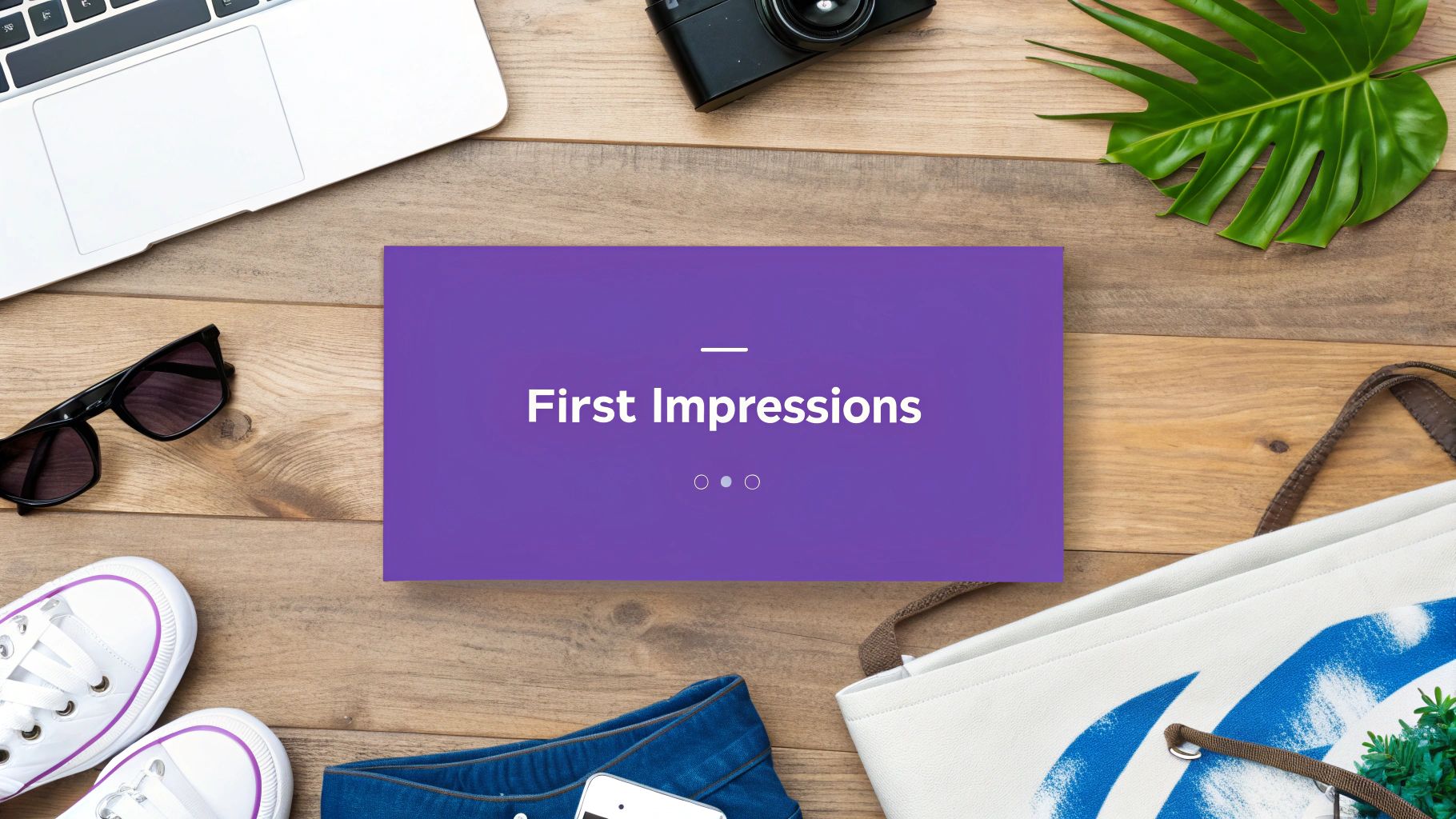
Most online stores see only about 4.2% of their visitors actually make a purchase. Yet some ecommerce pages consistently achieve double or triple those numbers. The difference often comes down to how well they understand and cater to their shoppers' needs and motivations.
The Psychology of the 'Buy' Button
Think of your ecommerce page like a skilled salesperson who knows exactly what concerns to address. For example, if you're selling organic baby food, your page should explain why natural ingredients matter for infant health while providing clear evidence of your product's quality and safety. Adding real customer reviews helps build confidence - when parents see others trusting your products with their children's health, they're more likely to do the same.
Trust: The Foundation of Conversion
Online shoppers need clear signs that they can trust your store with their money and personal information. This means featuring security badges, clear return policies, and money-back guarantees prominently on your page. You'll also want to make sure your site looks professional and polished - just as you'd be unlikely to buy from a shabby-looking physical store, visitors won't trust a sloppy website. Good design, detailed product information, and easy access to customer support all signal that you're a legitimate business worthy of their trust.
Elements That Matter on Your Ecommerce Landing Page
Beyond just looking good, certain page elements directly drive sales. Start with an attention-grabbing headline that speaks to your product's main benefit. Include high-quality photos and videos showing your product in action from multiple angles. Your "Buy" button should stand out visually and use specific language - instead of generic "Buy Now" text, try something like "Get Your 30-Day Trial" or "Save 20% Today." These small changes in wording can make a big difference in getting clicks.
From Browsing to Buying: The Customer Journey
Success comes from understanding not just the final purchase click, but the whole path shoppers take to get there. Map out each step - from when someone first discovers your product to after they buy - and make sure you're providing the right information at the right time. Focus on solving real customer problems and addressing common concerns upfront. This builds both immediate sales and long-term customer relationships, as satisfied buyers are more likely to come back and recommend you to others.
Crafting Landing Pages That Connect and Convert
A well-designed ecommerce landing page is all about psychology and building trust. After covering key elements like the "Buy Now" button and security features, let's explore how to write content that sparks interest and leads visitors to click through and purchase.
Telling Your Product's Story
A great landing page needs more than a bulleted list of features - it needs a compelling story that speaks directly to your target audience's needs and desires. For example, when selling hiking boots, don't just state the technical specs. Paint an exciting picture of future adventures - reaching breathtaking mountain vistas, conquering challenging trails with confidence, and exploring the wilderness in total comfort. By tapping into the emotional reasons behind the purchase, you can create a deeper connection with potential customers.
Social Proof: Building Trust and Encouraging Conversions
Think about how you choose a new restaurant - seeing happy diners enjoying their meals makes you more likely to give it a try. The same principle applies to ecommerce. Real customer reviews, testimonials, and social media mentions give shoppers confidence in their purchase decision. The key is authenticity - skip the generic praise and showcase specific experiences that address common customer concerns. This helps visitors envision themselves successfully using and enjoying your product.
The Power of the Call to Action
Your call-to-action (CTA) button is more than just a "Buy Now" link - it's a crucial element that guides visitors toward conversion. The wording, design, and placement all impact whether someone clicks or bounces. Instead of basic button text, try more engaging phrases like "Shop the Collection" or "Get Your Free Sample." Make sure the CTA stands out visually and works smoothly on all devices. A thoughtfully crafted CTA can mean the difference between making a sale and losing a potential customer.
Balancing Urgency and Authenticity
Creating time pressure can motivate quick purchases, but overdoing it erodes trust. Rather than bombarding visitors with aggressive countdown timers and limited-time offers, focus on communicating real value. Highlight genuine benefits and offer special perks to early buyers, like free shipping or bonus gifts. This creates natural urgency while maintaining an honest relationship with customers.
Testing and Optimization: The Key to Continuous Improvement
No landing page is perfect on the first try - regular testing and refinement are essential. Use A/B testing to compare different headlines, images, and CTAs to see what resonates with your audience. Analyze the data to identify what's working and what needs improvement. This methodical approach helps you build an increasingly effective page that drives more sales over time. The goal isn't just to launch a landing page - it's to create a finely-tuned conversion machine through ongoing optimization.
Designing for the Mobile-First Shopping Reality
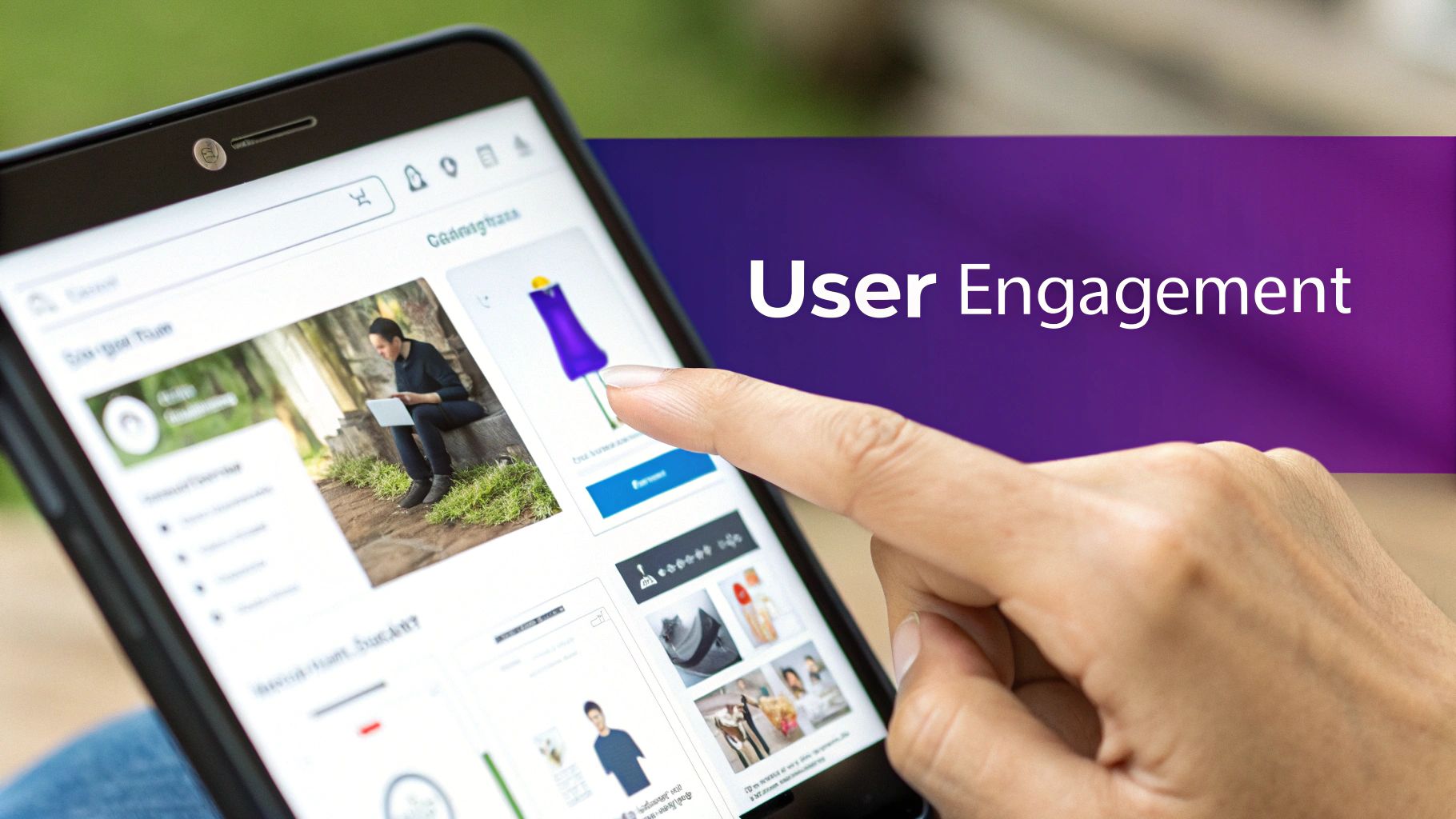
Most people now shop on their phones rather than computers, making mobile optimization essential for any online store. Think about your own experience - how frustrating is it when you try to browse a desktop site on your phone, with tiny buttons and text you have to zoom in to read? Creating a smooth mobile shopping experience isn't just about making your site responsive - it needs to be built with mobile users in mind from the start. Let's look at how to create mobile-friendly pages that turn browsers into buyers.
Prioritizing Speed and Performance
Mobile users have little patience for slow-loading pages. If your site takes too long to load, they'll likely bounce and shop elsewhere - even a one-second delay can reduce conversions by 20%. The good news is that some straightforward technical fixes can make a big difference. Compress your images, use browser caching effectively, and minimize HTTP requests to speed up load times. These behind-the-scenes improvements directly impact how quickly customers can start shopping.
Embracing Touch-Friendly Navigation
Shopping on a small screen is totally different from using a desktop. Buttons and links need to be large enough to tap accurately with a finger, not a tiny mouse cursor. Complex navigation menus that work fine on desktop can be a nightmare on mobile. Keep things simple with clear, touch-friendly elements like hamburger menus and prominent buttons. Make sure there's enough space between clickable items too - nothing frustrates mobile shoppers more than accidentally tapping the wrong thing.
Optimizing Product Imagery for Mobile
Great product photos are crucial for online shopping, but they need special treatment for mobile. While you want high-quality images that show product details clearly, large file sizes will kill your page speed. The key is finding the sweet spot between visual quality and fast loading. Use image compression to reduce file sizes while maintaining clarity. Load images progressively, with above-the-fold content appearing first. Add mobile-friendly zoom features so shoppers can examine products up close on their small screens.
Creating Mobile-Specific Content
While your core message should be consistent across devices, mobile shoppers often have different needs and priorities. Consider highlighting features especially relevant to mobile users, like in-store pickup options or app-exclusive deals. Keep forms short and simple - long checkout processes are particularly painful on mobile. Focus on streamlining the path to purchase by removing unnecessary steps and friction points. When you design specifically for mobile shopping behaviors, you make it easier for customers to complete their purchases successfully.
Harnessing AI for Personalized Shopping Experiences
Building a successful ecommerce landing page requires more than just eye-catching design. Many leading retailers now use Artificial Intelligence (AI) to create shopping experiences uniquely tailored to each visitor. This means going beyond basic product recommendations to customize the entire page based on individual preferences and behaviors. Let's explore how AI is changing ecommerce landing pages and delivering real results.
Understanding the Potential of AI-Driven Personalization
Think of walking into a store where displays automatically adjust to show products perfectly matched to your interests and past purchases. That's what AI personalization can do for ecommerce landing pages. For instance, when someone regularly browses running gear, an AI-powered page can showcase relevant shoes, clothes and accessories - creating a more focused shopping experience. This personal touch helps build stronger connections between customers and brands while boosting sales.
Practical Implementations of AI on Ecommerce Landing Pages
AI offers many ways to customize landing pages. Dynamic pricing lets retailers adjust costs in real-time based on factors like demand and competitor prices. AI can also personalize product images, descriptions, and offers to match what resonates with each visitor. When implemented thoughtfully, these personalized elements can significantly improve how well landing pages convert browsers into buyers.
Leveraging Customer Data Responsibly
While AI personalization relies on customer data, using that information ethically is essential. Being transparent about data collection and giving customers control over their information helps build trust. Following data privacy regulations isn't just about compliance - it protects both customers and the brand's reputation.
Overcoming Implementation Challenges
Adding AI personalization to an ecommerce landing page takes work. Connecting AI tools with existing systems requires technical skill and investment. Ensuring AI recommendations stay relevant also needs ongoing monitoring and fine-tuning. Many brands handle these challenges by starting small with specific personalization features before expanding. The results are worth it - some companies see conversion rates jump over 10% after adding AI personalization to their landing pages, showing this technology's real potential.
Testing and Optimization Strategies That Actually Work
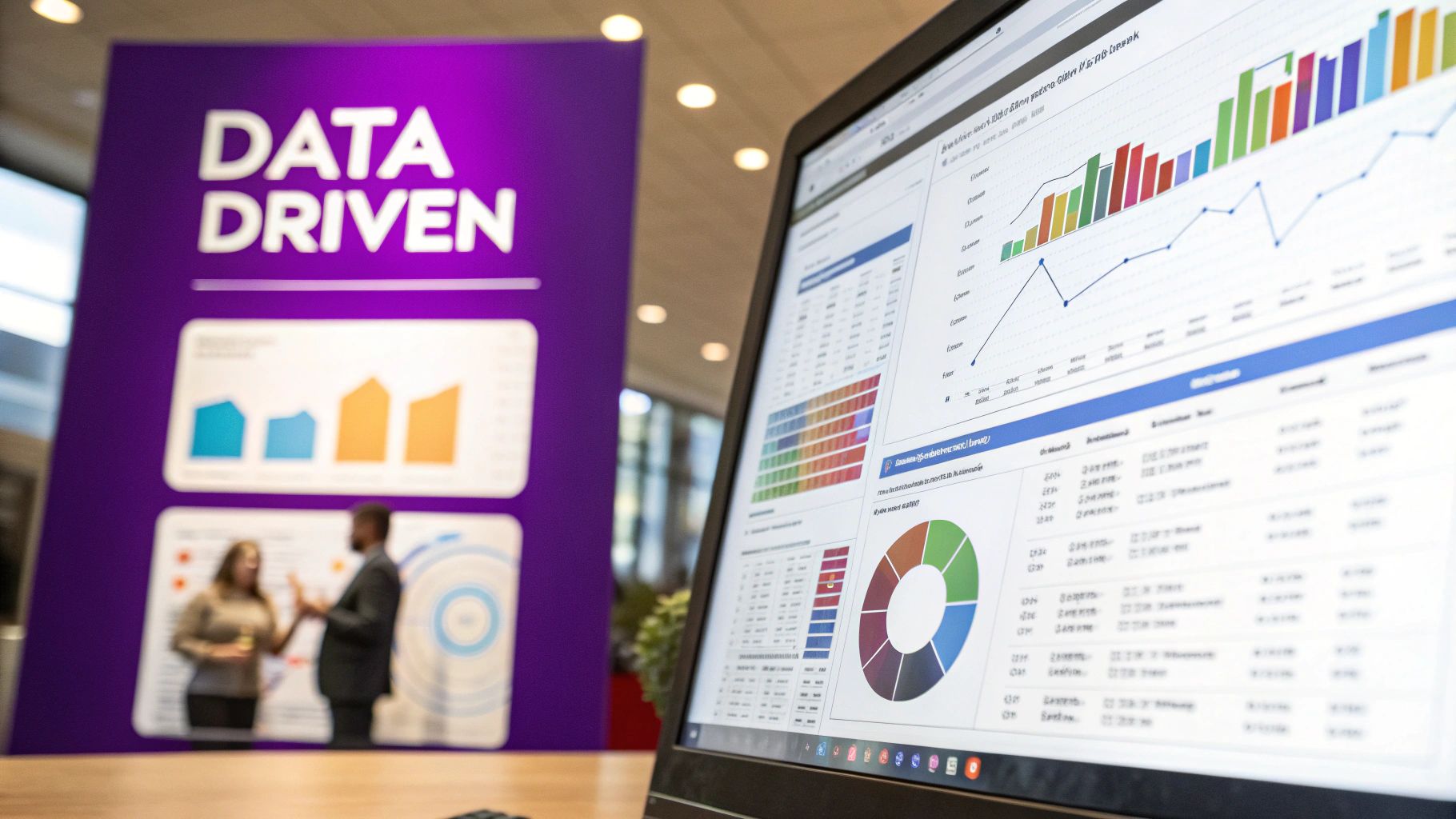
Getting the best results from your ecommerce landing page requires ongoing testing and refinement. Simply launching a page and crossing your fingers won't cut it. You need a clear plan to understand what connects with your visitors and steadily improve their experience. The results speak for themselves - companies that take a data-driven approach to testing often see conversion rate increases of over 10%. Let's explore proven strategies to optimize your landing page effectively.
Identifying Key Elements for Testing
When it comes to testing your landing page elements, some carry much more weight than others. Your headline, call-to-action buttons, and product images typically have the biggest impact on conversions. By focusing your testing on these key areas first, you'll get the most value from your optimization efforts. Start by mapping out the typical customer journey on your page to spot potential friction points. For example, if you notice high cart abandonment, that's a clear signal to test different checkout flows or payment options.
Structuring Tests for Meaningful Results
Random changes won't lead to real improvements. The key is running structured A/B tests where you create two versions of your page with just one element changed between them. This could be testing different headlines, button text, or image placement. By showing both versions to visitors and tracking metrics like conversion rates and bounce rates, you can clearly see the impact of each change. This focused approach helps you understand exactly which tweaks make a real difference.
Interpreting Data and Driving Improvements
The numbers only matter if you can extract meaningful insights from them. After running A/B tests, take time to analyze the results and identify clear patterns in user behavior. For instance, if a new call-to-action gets more clicks but doesn't increase final conversions, that suggests people are interested but something else is stopping them from completing their purchase. Use these insights to guide your next round of tests and refinements.
Advanced Optimization Techniques
While A/B testing forms the foundation, you can take optimization further with techniques like multivariate testing and user feedback. Multivariate testing lets you examine how multiple page elements work together by testing various combinations simultaneously. This works best for pages with substantial traffic since you need enough data for reliable results. Don't forget to gather direct user feedback through surveys and usability testing sessions too. The combination of data-driven testing and real user insights helps create pages that truly connect with visitors and drive results. Remember - great optimization is about understanding and serving your customers' needs, not just tweaking design elements.
Measuring Success Beyond Basic Metrics
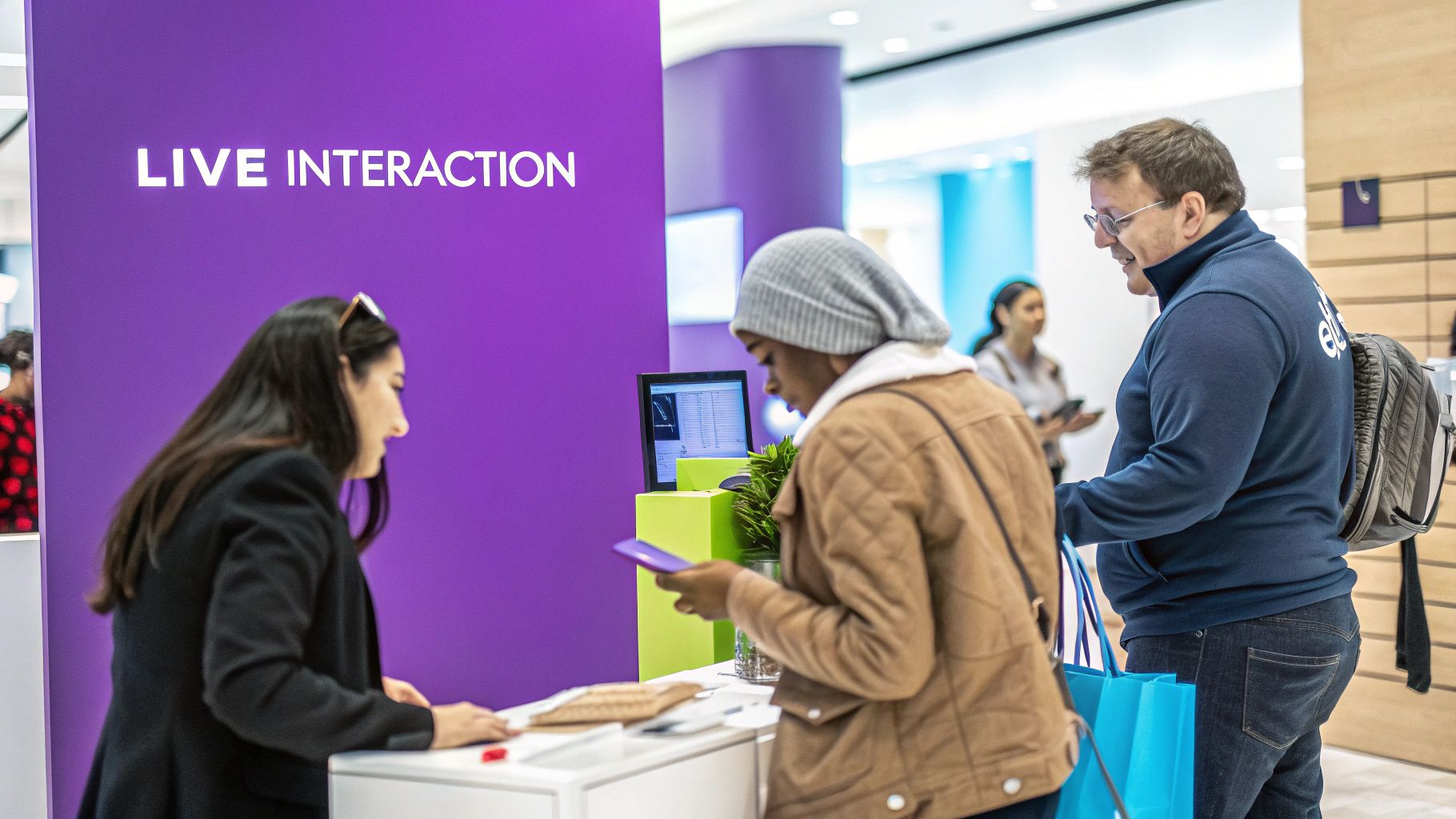
When it comes to evaluating your ecommerce landing page performance, looking at surface-level metrics only tells part of the story. While click-through rates provide some insight, the real measure of success lies in how well your page drives business growth and builds lasting customer relationships.
Key Performance Indicators (KPIs) for Ecommerce Landing Pages
To truly understand how your landing page performs, you need to track metrics that matter for your business goals. Here are the essential KPIs that provide meaningful insights into customer behavior:
Conversion Rate: The percentage of visitors who make a purchase is a foundational metric. The ecommerce average hovers around 2%, but top-performing pages aim for 5% or higher through strategic optimization.
Average Order Value (AOV): This shows how much customers typically spend per order. Even small improvements here can significantly boost revenue. Smart product bundling and relevant upsell offers can help increase AOV over time.
Customer Lifetime Value (CLTV): By measuring the total revenue earned from a customer's entire relationship with your brand, CLTV helps gauge long-term success. Higher numbers indicate strong customer loyalty and repeat purchases.
Bounce Rate: When visitors leave after viewing just one page, it may signal issues with your page's relevance, design, or load time that need addressing.
Cart Abandonment Rate: This tracks how often shoppers add items but don't complete their purchase. Understanding where customers drop off helps identify and fix friction points in checkout.
Tracking the Full Customer Journey
Looking at individual metrics in isolation misses the bigger picture. That's why it's critical to understand how customers move through your entire landing page experience - from their first visit through to completing a purchase. Tools like heatmaps and session recordings reveal exactly how visitors interact with your page, showing where they click, scroll, and potentially get stuck. These insights help optimize the layout and remove obstacles that prevent sales.
Data-Informed Decisions and Scaling Success
Once you understand your key metrics and customer journey, you can make smart improvements based on real data. This might involve testing different headlines, calls-to-action, or product images. For instance, if your data shows many customers abandoning checkout, you could experiment with simplifying the process or adding more payment options. The best part? When you discover what works well on one landing page, you can often apply those winning elements across your other product pages too. This allows you to steadily improve results across your entire store.
Ready to elevate your ecommerce business with a high-performing website? Wand Websites is your partner in growth. We specialize in building Shopify stores designed to convert, helping you break free from the limitations of Etsy and achieve lasting success. Visit Wand Websites today to learn more.


